Sorry, everyone! I’m on the run today and blogging doesn’t fit into the schedule. So, I dug up an old guest blog from my friend, John Greco. I think it is a great reminder of why non-your profit is wealthier than your balance sheet says it is. Enjoy the re-post!
~Erik
Cubicle Diamonds
By John Greco
Originally published on March 15, 2012
Re-posted with permission from johnponders blog
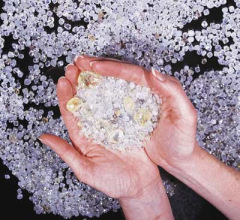 An African farmer heard tales about people who had made millions by discovering diamond mines. These tales so excited the farmer that he could hardly wait to go prospecting for diamonds himself. He sold the farm and spent the rest of his life wandering the African continent searching unsuccessfully for the gleaming gems that brought such high prices on the markets of the world. Finally, worn out and in a fit of despondency, he threw himself into a river and drowned.
An African farmer heard tales about people who had made millions by discovering diamond mines. These tales so excited the farmer that he could hardly wait to go prospecting for diamonds himself. He sold the farm and spent the rest of his life wandering the African continent searching unsuccessfully for the gleaming gems that brought such high prices on the markets of the world. Finally, worn out and in a fit of despondency, he threw himself into a river and drowned.
Meanwhile, the man who had bought his farm happened to be crossing a small stream on the property one day, when suddenly there was a bright flash of blue and red light from the stream bottom. He bent down and picked up a stone…
It turned out to be one of the largest diamonds ever discovered.
And his creek was full of such stones, not all as large, but nonetheless valuable… The farm the first farmer had sold, so that he might find a diamond mine, turned out to be one of the most productive diamond mines on the entire African continent.
That first farmer had owned, literally, acres of diamonds, but he didn’t look there.
— Update, from a reader: From a lecture by Russell Conwell and popularized by Earl Nightingale many years ago. Thanks Deb!
This is a pretty well-traveled story, with a pretty straightforward lesson.
Before you look out, look in. You may already have what you need to accomplish what you want.
I’m going to “mine” this differently.
There are diamonds of a sort all around you now. Can you see them?
Look outside your office. Down the hallway. In the cafeteria. Every single meeting you go to. And all the ones you don’t.
 Jerry, the financial analyst, can make a mean bouillabaisse. Mary, the executive admin, is a Toastmasters organizer. Julie, in inside sales, does graphic design for her church’s marketing pieces. Peggy, in tech support, is a stand up comedian. Bill, in logistics, does resumes on the side for family and friends. Susan, in customer support, is on the board of a local non-profit. Judy, a software tester, volunteers at the local hospice. Christian, a call center agent, paints. John, an industrial engineering manager, blogs. Damian, a research analyst, is an actor in a local drama troupe.
Jerry, the financial analyst, can make a mean bouillabaisse. Mary, the executive admin, is a Toastmasters organizer. Julie, in inside sales, does graphic design for her church’s marketing pieces. Peggy, in tech support, is a stand up comedian. Bill, in logistics, does resumes on the side for family and friends. Susan, in customer support, is on the board of a local non-profit. Judy, a software tester, volunteers at the local hospice. Christian, a call center agent, paints. John, an industrial engineering manager, blogs. Damian, a research analyst, is an actor in a local drama troupe.
Diamonds, all.
Our people are our greatest asset.
Indeed.
Too bad their added value is off the books.
Undiscovered, in cubicles, unmined.


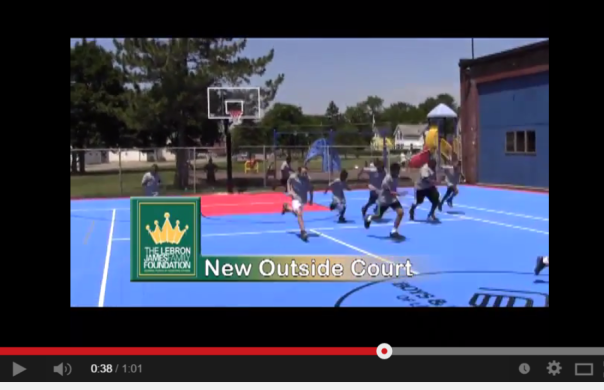
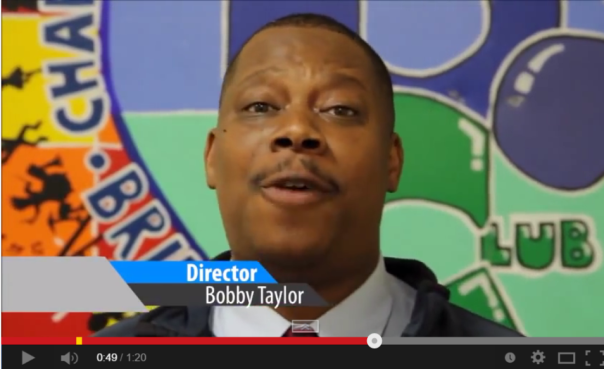
 If you Google the definition of “Pandora’s Box,” the all-knowing internet oracle says the term means: “a process that generates many complicated problems as the result of unwise interference in something.” I love this expression, and I used it a few months ago when talking to the board president of a non-profit organization who was describing to me how they were handling a complaint about the agency’s executive director.
If you Google the definition of “Pandora’s Box,” the all-knowing internet oracle says the term means: “a process that generates many complicated problems as the result of unwise interference in something.” I love this expression, and I used it a few months ago when talking to the board president of a non-profit organization who was describing to me how they were handling a complaint about the agency’s executive director. I woke up this morning with the words of Samuel Jackson echoing through my head. While this actor has played a number of different roles in Hollywood, the words in my head were from his Capital One credit card commercials . . . “What’s in your wallet?” As I shuffled around my hotel room trying to wake up, I started reviewing all of the possible reasons why I woke up with this popular commercial on my mind. After a little thinking, I’ve decided that my subconscious mind is still wrestling with an email I received yesterday morning from a non-profit organization asking me not to delete any reference to them in a blog I posted last week.
I woke up this morning with the words of Samuel Jackson echoing through my head. While this actor has played a number of different roles in Hollywood, the words in my head were from his Capital One credit card commercials . . . “What’s in your wallet?” As I shuffled around my hotel room trying to wake up, I started reviewing all of the possible reasons why I woke up with this popular commercial on my mind. After a little thinking, I’ve decided that my subconscious mind is still wrestling with an email I received yesterday morning from a non-profit organization asking me not to delete any reference to them in a blog I posted last week. I think there are a number of “lessons learned” associated with this situation. Here are the one’s I can identify:
I think there are a number of “lessons learned” associated with this situation. Here are the one’s I can identify: I was on the phone with an old friend a few days ago, and our conversation turned to two naming opportunities with which he was struggling. One situation dealt with naming his agency’s golf outing after an aging volunteer who is the central organizing force behind the event. The other situation pertained to a planned giving prospect who is contemplating the possibility of leaving a very large legacy gift.
I was on the phone with an old friend a few days ago, and our conversation turned to two naming opportunities with which he was struggling. One situation dealt with naming his agency’s golf outing after an aging volunteer who is the central organizing force behind the event. The other situation pertained to a planned giving prospect who is contemplating the possibility of leaving a very large legacy gift. Finally, have you thought about the permanent nature of putting someone’s name on something and what happens when life throws your agency a curveball? If I’m being too cryptic at this time in the morning, I want you to think about what you would’ve done if you had accepted large donations with naming opportunities from either of these infamous gentlemen:
Finally, have you thought about the permanent nature of putting someone’s name on something and what happens when life throws your agency a curveball? If I’m being too cryptic at this time in the morning, I want you to think about what you would’ve done if you had accepted large donations with naming opportunities from either of these infamous gentlemen: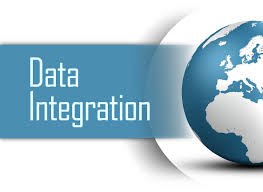 One of my many jobs in this world is being the webmaster and community manager for a large national organization’s resource development website, which essentially acts as a fundraising toolbox for their local affiliates. One of the many functions of the website is an “Ask the Expert” service where front line staff can ask resource development questions and receive an answer in approximately 24 hours. A few weeks ago a question was asked about donor databases and QuickBooks Online. While I’m happy with our answer, I’m wondering if there isn’t more advice that could’ve been provided.
One of my many jobs in this world is being the webmaster and community manager for a large national organization’s resource development website, which essentially acts as a fundraising toolbox for their local affiliates. One of the many functions of the website is an “Ask the Expert” service where front line staff can ask resource development questions and receive an answer in approximately 24 hours. A few weeks ago a question was asked about donor databases and QuickBooks Online. While I’m happy with our answer, I’m wondering if there isn’t more advice that could’ve been provided. OK . . . you’ve had a chance to read the question and answer. What additional advice would you have provided? Do you use QuickBooks Online and a donor database with a data integration bridge? If so, what can you tell us about the data bridge and the database (or CRM)?
OK . . . you’ve had a chance to read the question and answer. What additional advice would you have provided? Do you use QuickBooks Online and a donor database with a data integration bridge? If so, what can you tell us about the data bridge and the database (or CRM)? There has been lots written throughout the years about the psychology of philanthropy. Most of the stuff I’ve read has been right on target with regards to why people open their wallets/purses and give money to a non-profit organization. I’ve been asked to revise a whitepaper titled “Why People Do and Don’t Give Money” for a national organization’s online fundraising toolbox to which their local affiliates have access. So, I thought I’d ask you and the rest of the DonorDreams blog community for a little help this morning. Would you please be so kind and give me one minute (or less) of your time at the end of this post?
There has been lots written throughout the years about the psychology of philanthropy. Most of the stuff I’ve read has been right on target with regards to why people open their wallets/purses and give money to a non-profit organization. I’ve been asked to revise a whitepaper titled “Why People Do and Don’t Give Money” for a national organization’s online fundraising toolbox to which their local affiliates have access. So, I thought I’d ask you and the rest of the DonorDreams blog community for a little help this morning. Would you please be so kind and give me one minute (or less) of your time at the end of this post? I ran across an old board development handout the other day, and it made me laugh. So, I decided to share its essence with you today and ask for your thoughts and opinions. The handout started off with the following two sentences (and I’ve changed the names to protect the innocent):
I ran across an old board development handout the other day, and it made me laugh. So, I decided to share its essence with you today and ask for your thoughts and opinions. The handout started off with the following two sentences (and I’ve changed the names to protect the innocent): After spending a nice long Labor Day weekend in Michigan at a friend’s summer cottage on Saginaw Bay, I am now faced (as are you) with the long slide towards the end of the year. Not only can I not wear white clothing now that Labor Day has come and gone, but my fundraising friends should be starting to engage board, staff and fundraising volunteers in developing their agency’s written 2015 resource development plan.
After spending a nice long Labor Day weekend in Michigan at a friend’s summer cottage on Saginaw Bay, I am now faced (as are you) with the long slide towards the end of the year. Not only can I not wear white clothing now that Labor Day has come and gone, but my fundraising friends should be starting to engage board, staff and fundraising volunteers in developing their agency’s written 2015 resource development plan.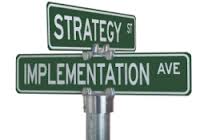 Having two degrees in planning, I tend to get overly excited about developing plans, and some of my past resource development plans have been 50 and 75 pages in length (Yeah, I have gotten carried away). Those plans included elements such as:
Having two degrees in planning, I tend to get overly excited about developing plans, and some of my past resource development plans have been 50 and 75 pages in length (Yeah, I have gotten carried away). Those plans included elements such as: Jeff Foxworthy has made a career out of answering a simple question: “You know you’re a redneck when . . .” This morning I thought I’d do something similar with: “You know you’re fundraising campaign has gone viral when . . .” by describing how last week unfolded for me as it relates to the
Jeff Foxworthy has made a career out of answering a simple question: “You know you’re a redneck when . . .” This morning I thought I’d do something similar with: “You know you’re fundraising campaign has gone viral when . . .” by describing how last week unfolded for me as it relates to the  Fellow blogger and fundraising genius — Jeff Brooks — publishes a blog post titled “
Fellow blogger and fundraising genius — Jeff Brooks — publishes a blog post titled “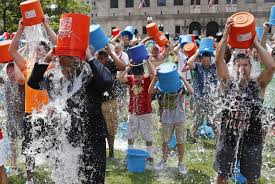 The day is winding down. The television is on, we’re into what will likely be the last show of the evening before going to bed, and my phone starts to blow-up. Needless to say, one of my former Boys & Girls Club of Elgin board presidents and good friend, Tim Williams, just completed the
The day is winding down. The television is on, we’re into what will likely be the last show of the evening before going to bed, and my phone starts to blow-up. Needless to say, one of my former Boys & Girls Club of Elgin board presidents and good friend, Tim Williams, just completed the